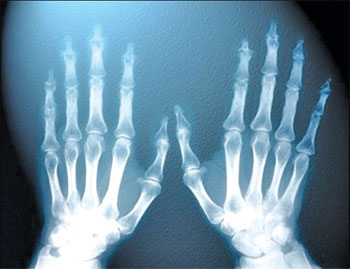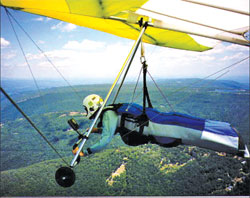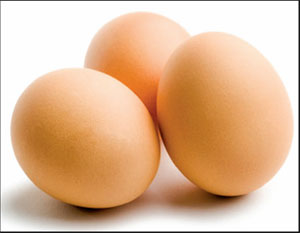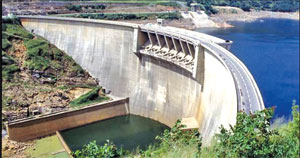|

 Why
we shiver when we are cold Why
we shiver when we are cold
Whenever we feel cold, our normal body processes begin to slow down
and our body temperature drops.
However, before the body temperature drops to a critical level, the
body tries to raise its own temperature by shivering.
The rapid contraction of muscles is shivering.
It is this contraction which helps generate heat within the body.
 How
X-rays got their name How
X-rays got their name
The German Physicist Wilhelm Roentgen discovered X-rays in 1895. He
was astonished by the way in which the rays could penetrate things and
had no idea what they could be. Therefore he called them X-rays, because
in science X is often used to represent something that is unknown.
X-rays were also called Roentgen rays for a time but the name X-ray
stuck.
Roentgen's name is commemorated in science in the unit of X-ray
dosage - which is the roentgen.
 Who
pioneered hang-gliding Who
pioneered hang-gliding
Hang-gliding is not a modern invention. It was pioneered a century
ago by the German inventor, Olto Lilienthal. He built several different
kinds of hang-gliders to test aircraft design, managing to fly as far as
250m (820 ft). Lilienthal was killed in a crash in 1896.
 How
scallops get about How
scallops get about
Scallops are a group of animals which belong to the family of
molluscs. These particular molluscs are known as bivalves; in other
words they have a shell composed of two halves or valves.
Most bivalves spend their time attached to rocks or hidden in the
sand. If they are threatened, they dig deeper into the sand to escape.
The scallops can also do the same but they have a more ingenious method
of getting away. They vigorously clap their valves together to rise from
the seabed and swim off to safety.
What dams have in common with eggs
  The
curved strength. High dams often consist of a slim concrete arch. The
dam curves into the water so that as the water pushes against the dam,
it compresses the whole structure. Compressed concrete is very strong,
and the dam remains standing even though it is very thin. The
curved strength. High dams often consist of a slim concrete arch. The
dam curves into the water so that as the water pushes against the dam,
it compresses the whole structure. Compressed concrete is very strong,
and the dam remains standing even though it is very thin.
Similarly a bird's egg has to be sufficiently strong to protect the
growing bird inside. Yet it has to be weak enough to allow the bird to
break out and hatch. Eggs are curved for this reason. A force applied to
the outside compresses the egg making the shell stronger and preventing
it from breaking (unless the force is extremely strong.)
The growing bird is thus protected inside. However, as the shell is
not compressed when force is applied from the inside, the chick finds it
easy to force its way out into the world. |


